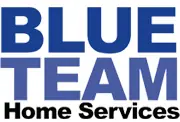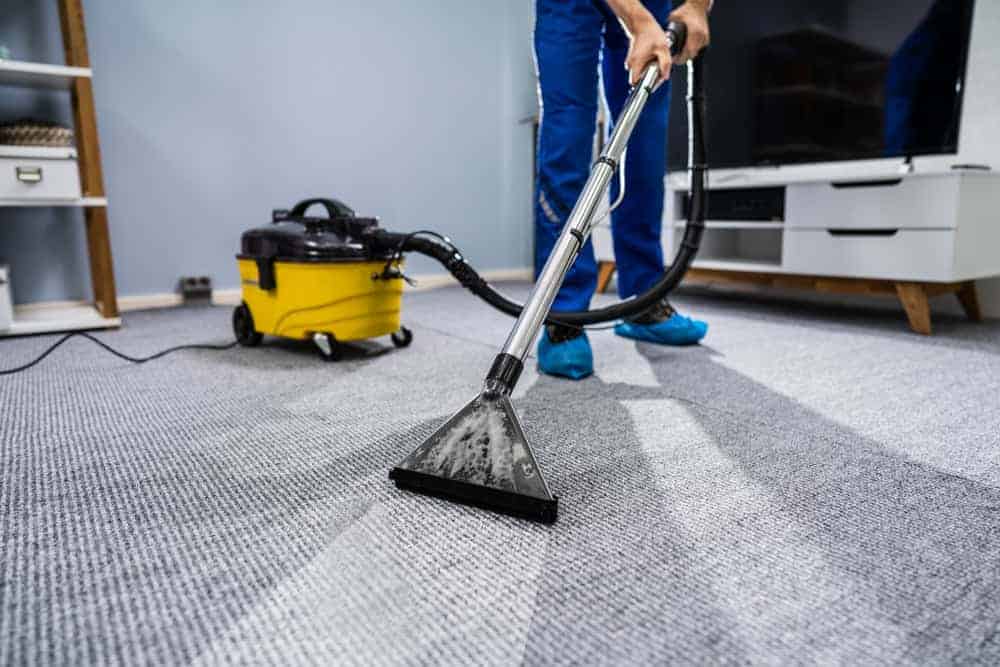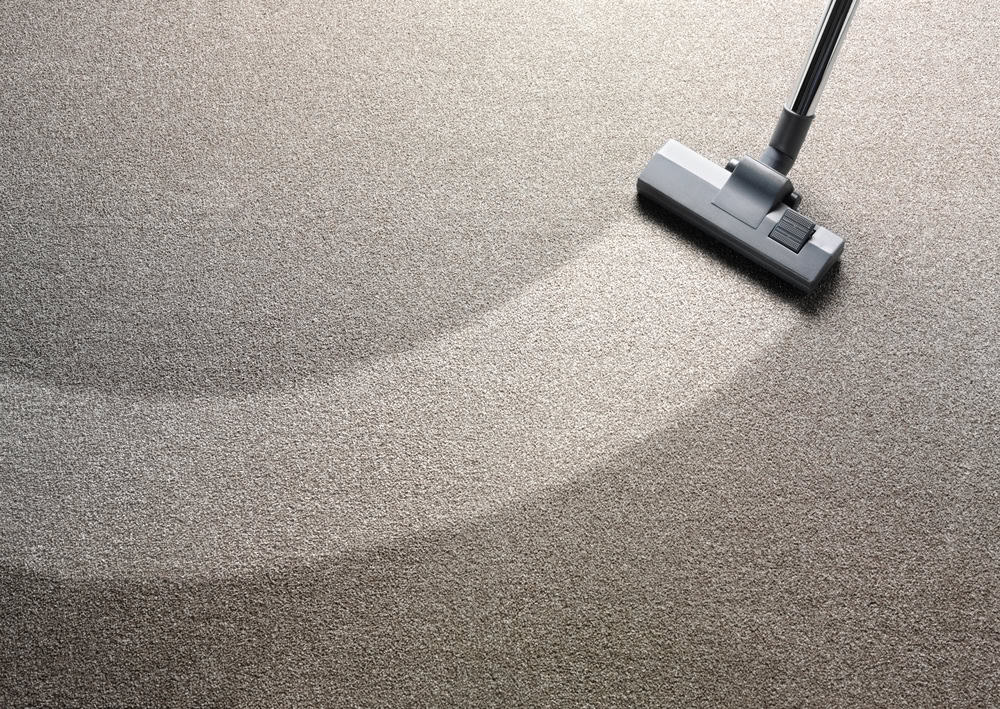Summary:
Daily Carpet Care That Actually Makes a Difference
Most carpet damage happens gradually, not from one big disaster. The sand tracked in from Mission Beach, the salt air that settles on everything, the everyday foot traffic—these add up to serious wear if you’re not staying ahead of it.
The game-changer is vacuum frequency, but not the way most people think. You’re not just picking up visible dirt. You’re removing the abrasive particles that cut carpet fibers every time someone walks across them. In San Diego’s sandy environment, this matters even more than in other places.
Quality matters here too. A good vacuum with proper suction and a rotating brush makes the difference between surface cleaning and actually removing the debris that causes long-term damage.
The Right Way to Vacuum for Maximum Carpet Life
Here’s where most people get it wrong—they vacuum too fast and in random patterns. Your carpet fibers have a direction, and working with that direction instead of against it removes more dirt and causes less damage.
Start by vacuuming against the grain to lift embedded dirt, then finish by vacuuming with the grain to smooth the fibers back down. This two-pass method removes significantly more debris than single-direction vacuuming. For high-traffic areas in your San Diego home, this might mean daily attention, especially during summer months when beach sand gets tracked in constantly.
Pay special attention to transition areas where hard floors meet carpet. These spots collect the most debris and show wear first. A crevice tool works better than the main vacuum head for these edges—it actually removes the buildup instead of just pushing it around.
The timing matters too. Vacuum before the debris gets ground in by foot traffic. That means hitting the entry areas daily if you live near the coast, and the main living areas at least every other day. It sounds like a lot, but five minutes of daily maintenance prevent hours of deep cleaning later.
Don’t forget about furniture legs and the areas underneath. Debris collects in these spots and creates permanent indentations over time. Moving lightweight furniture weekly and heavier pieces monthly keeps the carpet fibers from getting permanently compressed.
Dealing with San Diego's Unique Carpet Challenges
Here’s where most people get it wrong—they vacuum too fast and in random patterns. Your carpet fibers have a direction, and working with that direction instead of against it removes more dirt and causes less damage.
Start by vacuuming against the grain to lift embedded dirt, then finish by vacuuming with the grain to smooth the fibers back down. This two-pass method removes significantly more debris than single-direction vacuuming. For high-traffic areas in your San Diego home, this might mean daily attention, especially during summer months when beach sand gets tracked in constantly.
Pay special attention to transition areas where hard floors meet carpet. These spots collect the most debris and show wear first. A crevice tool works better than the main vacuum head for these edges—it actually removes the buildup instead of just pushing it around.
The timing matters too. Vacuum before the debris gets ground in by foot traffic. That means hitting the entry areas daily if you live near the coast, and the main living areas at least every other day. It sounds like a lot, but five minutes of daily maintenance prevent hours of deep cleaning later.
Don’t forget about furniture legs and the areas underneath. Debris collects in these spots and creates permanent indentations over time. Moving lightweight furniture weekly and heavier pieces monthly keeps the carpet fibers from getting permanently compressed.
Stain Removal That Works When It Matters Most
When something spills on your carpet, the first 60 seconds determine whether you’re dealing with a minor cleanup or a permanent stain. Most people’s instinct is to rub or scrub, but that’s exactly what turns a manageable spill into a lasting problem.
The key is absorption, not agitation. Blot from the outside of the spill toward the center to prevent spreading. Use clean, white cloths or paper towels—colored materials can transfer dye to your carpet. Apply pressure and let the material absorb the liquid, then use a fresh section of cloth and repeat.
Different types of spills need different approaches, and having the right supplies ready makes all the difference between success and frustration.
Emergency Spill Response for Common Household Accidents
Red wine, coffee, pet accidents, and food spills—these happen in every home, and how you handle the first few minutes determines the outcome. Each type of spill has specific characteristics that require different treatment approaches.
For liquid spills like wine or coffee, speed is everything. Blot immediately with clean, dry cloths. Don’t pour water on the spill—this dilutes it and spreads it deeper into the carpet padding. Once you’ve absorbed as much liquid as possible, then you can apply a small amount of clean water to dilute what remains, but blot this up immediately too.
Grease-based spills need a different approach entirely. Dish soap works better than carpet cleaners for these because it’s designed to break down oils. Mix a small amount of clear dish soap with warm water, apply sparingly, and blot. The key is using very little liquid—too much soap creates a residue that attracts more dirt later.
Pet accidents require enzyme cleaners to fully eliminate odors. Regular cleaners might remove the visible stain but leave behind organic compounds that continue to smell, especially in humid conditions. Apply the enzyme cleaner according to directions and resist the urge to clean it up too quickly—these products need time to break down the organic matter completely.
For food spills, remove any solid material first without pressing it into the carpet. A spoon works better than a knife because it’s less likely to cut carpet fibers. Then treat the remaining stain based on its primary component—protein-based foods need cold water, while sugary spills can handle warm water.
The biggest mistake people make is over-wetting the carpet during stain removal. Too much liquid pushes the stain deeper and can damage the carpet backing or padding. Use the minimum amount of cleaning solution necessary and always blot up excess moisture immediately.
When DIY Methods Aren't Enough and Professional Help Makes Sense
Sometimes the best carpet maintenance decision is knowing when to call in professional help. Certain situations are beyond what household cleaning methods can handle effectively, and attempting DIY solutions can actually make the problem worse.
Large spills that have soaked through to the padding almost always need professional attention. Once liquid reaches the padding, it’s nearly impossible to extract completely with household equipment. This is especially important in San Diego’s humid climate, where trapped moisture leads to mold and mildew problems quickly.
Old stains that have set in for weeks or months rarely respond to consumer-grade products. We have access to stronger solutions and equipment that can break down set-in stains without damaging carpet fibers. Attempting to remove old stains with increasingly aggressive DIY methods often results in permanent damage to the carpet.
Pet odors that keep returning after cleaning indicate the problem has reached the carpet padding or subfloor. Surface cleaning won’t solve this—it requires professional-grade extraction equipment and potentially padding replacement. This is particularly common in San Diego homes where humidity prevents thorough drying between cleaning attempts.
High-traffic areas that look dingy despite regular vacuuming benefit from professional deep cleaning every 12-18 months. Professional steam cleaning removes embedded dirt that household machines can’t reach. This isn’t just about appearance—removing this deep-down debris prevents premature wear and extends carpet life significantly.
Water damage from leaks, flooding, or excessive humidity requires immediate professional attention. Carpet that stays wet for more than 24-48 hours in San Diego’s climate will develop mold and mildew problems that pose health risks. Professional water extraction and drying equipment can often save carpets that would otherwise need replacement.
Keeping Your San Diego Carpets Clean and Healthy Long-Term
Maintaining clean carpets isn’t about perfection—it’s about consistency and using the right techniques for your specific situation. The combination of daily maintenance, quick response to spills, and knowing when to bring in professional help will keep your carpets looking good and lasting longer.
San Diego’s unique environment means adapting general carpet care advice to work with coastal humidity, sand, and year-round outdoor activity. The techniques covered here address these specific challenges while keeping maintenance realistic for busy households.
When you need professional carpet cleaning or encounter problems beyond DIY solutions, we at Blue Team Carpet Cleaning understand the specific challenges San Diego County homeowners face and can provide the expertise to keep your carpets healthy and attractive for years to come.





